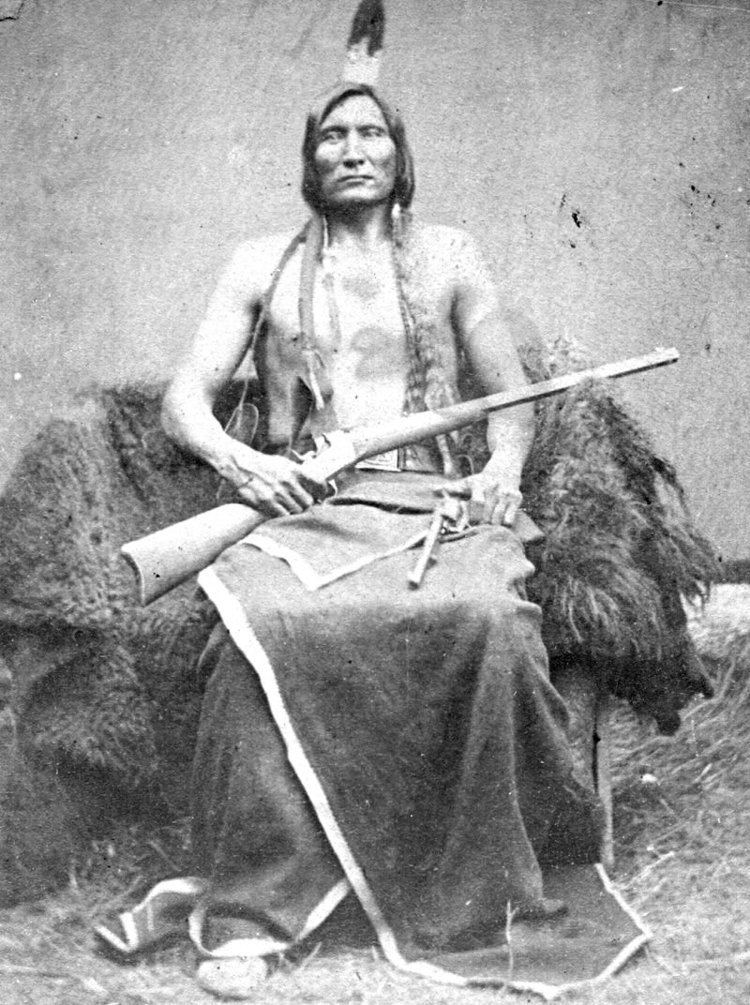 | ||
First nations lakota people heartbreaking
The Lakȟóta people (pronounced [laˈkˣota]; also known as Teton, Thítȟuŋwaŋ ("prairie dwellers"), and Teton Sioux are part of a confederation of seven related Sioux tribes, the Očhéthi Šakówiŋ or seven council fires, and as such one of the indigenous peoples of the Great Plains of North America. They speak the Lakota language, the westernmost of the three Siouan language groups, occupying lands in both North and South Dakota.
Contents
- First nations lakota people heartbreaking
- History
- United States
- Canada
- Independence movement
- Current activism
- Ethnonyms
- Notable Lakota
- Reservations
- References
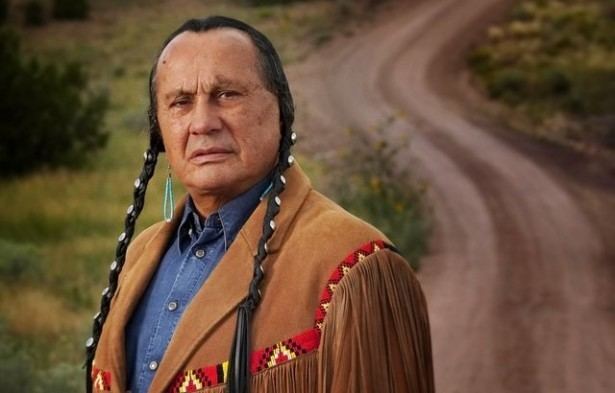
The seven bands or "sub-tribes" of the Lakota are:
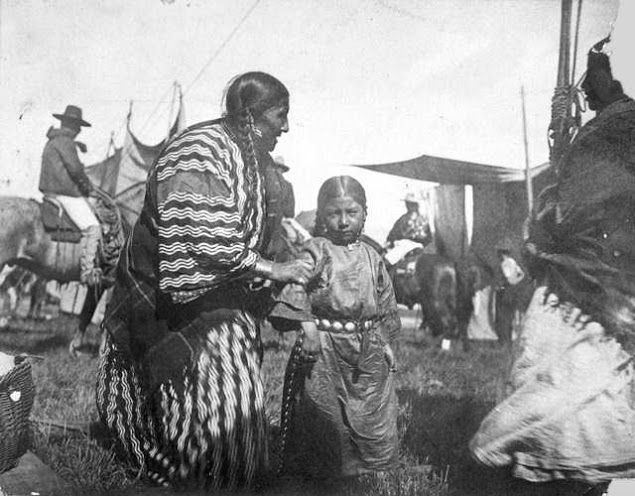
Notable Lakota persons include Tȟatȟáŋka Íyotake (Sitting Bull) from the Húnkpapȟa band; Touch the Clouds from the Miniconjou band; and, Tȟašúŋke Witkó (Crazy Horse), Maȟpíya Lúta (Red Cloud), Heȟáka Sápa (Black Elk), Siŋté Glešká (Spotted Tail), and Billy Mills from the Oglala band.
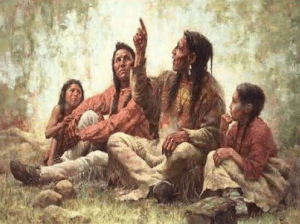
History
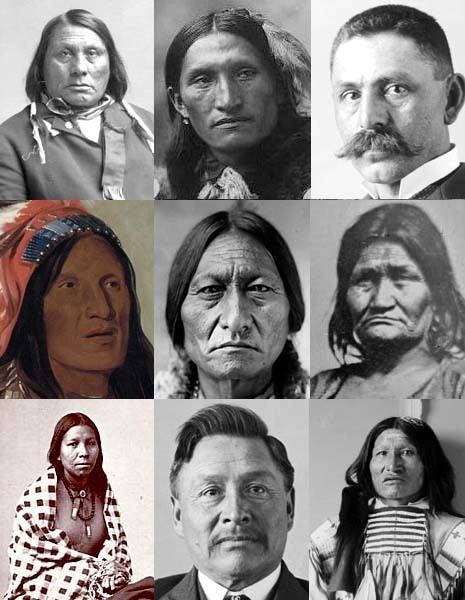
Siouan language speakers may have originated in the lower Mississippi River region and then migrated to or originated in the Ohio Valley. They were agriculturalists and may have been part of the Mound Builder civilization during the 9th–12th centuries CE. In the late 16th and early 17th centuries, Dakota-Lakota speakers lived in the upper Mississippi Region in present-day Minnesota, Wisconsin, Iowa, and the Dakotas. Conflicts with Anishnaabe and Cree peoples pushed the Lakota west onto the Great Plains in the mid- to late-17th century.

Early Lakota history is recorded in their Winter counts (Lakota: waníyetu wówapi), pictorial calendars painted on hides or later recorded on paper. The Battiste Good winter count records Lakota history back to 900 CE, when White Buffalo Calf Woman gave the Lakota people the White Buffalo Calf Pipe.
Around 1730, Cheyenne people introduced the Lakota to horses, called šuŋkawakaŋ ("dog [of] power/mystery/wonder"). After their adoption of horse culture, Lakota society centered on the buffalo hunt on horseback. The total population of the Sioux (Lakota, Santee, Yankton, and Yanktonai) was estimated at 28,000 by French explorers in 1660. The Lakota population was first estimated at 8,500 in 1805, growing steadily and reaching 16,110 in 1881. The Lakota were, thus, one of the few Native American tribes to increase in population in the 19th century. The number of Lakota has now increased to more than 170,000, of whom about 2,000 still speak the Lakota language (Lakȟótiyapi).
After 1720, the Lakota branch of the Seven Council Fires split into two major sects, the Saône who moved to the Lake Traverse area on the South Dakota–North Dakota–Minnesota border, and the Oglála-Sičháŋǧu who occupied the James River valley. However, by about 1750 the Saône had moved to the east bank of the Missouri River, followed 10 years later by the Oglála and Brulé (Sičháŋǧu).
The large and powerful Arikara, Mandan, and Hidatsa villages had long prevented the Lakota from crossing the Missouri. However, the great smallpox epidemic of 1772–1780 destroyed three-quarters of these tribes. The Lakota crossed the river into the drier, short-grass prairies of the High Plains. These newcomers were the Saône, well-mounted and increasingly confident, who spread out quickly. In 1765, a Saône exploring and raiding party led by Chief Standing Bear discovered the Black Hills (the Paha Sapa), then the territory of the Cheyenne. Ten years later, the Oglála and Brulé also crossed the river. In 1776, the Lakota defeated the Cheyenne, who had earlier taken the region from the Kiowa. The Cheyenne then moved west to the Powder River country, and the Lakota made the Black Hills their home.
Initial United States contact with the Lakota during the Lewis and Clark Expedition of 1804–1806 was marked by a standoff. Lakota bands refused to allow the explorers to continue upstream, and the expedition prepared for battle, which never came. Nearly half a century later, after the United States Army had built Fort Laramie without permission on Lakota land, the Fort Laramie Treaty of 1851 was negotiated to protect travelers on the Oregon Trail. The Cheyenne and Lakota had previously attacked emigrant parties in a competition for resources, and also because some settlers had encroached on their lands. The Fort Laramie Treaty acknowledged Lakota sovereignty over the Great Plains in exchange for free passage on the Oregon Trail for "as long as the river flows and the eagle flies".
The United States government did not enforce the treaty restriction against unauthorized settlement. Lakota and other bands attacked settlers and even emigrant trains, causing public pressure on the U.S. Army to punish the hostiles. On September 3, 1855, 700 soldiers under American General William S. Harney avenged the Grattan Massacre by attacking a Lakota village in Nebraska, killing about 100 men, women, and children. A series of short "wars" followed, and in 1862–1864, as refugees from the "Dakota War of 1862" in Minnesota fled west to their allies in Montana and Dakota Territory. Increasing illegal settlement after the American Civil War caused war once again.
The Black Hills were considered sacred by the Lakota, and they objected to mining. Between 1866 and 1868 the U.S. Army fought the Lakota and their allies along the Bozeman Trail over U.S. Forts built to protect miners traveling along the trail. Oglala Chief Red Cloud led his people to victory in Red Cloud's War. In 1868, the United States signed the Fort Laramie Treaty of 1868, exempting the Black Hills from all white settlement forever. Four years later gold was discovered there, and prospectors descended on the area.
The attacks on settlers and miners were met by military force conducted by army commanders such as Lieutenant Colonel George Armstrong Custer. General Philip Sheridan encouraged his troops to hunt and kill the buffalo as a means of "destroying the Indians' commissary."
The allied Lakota and Arapaho bands and the unified Northern Cheyenne were involved in much of the warfare after 1860. They fought a successful delaying action against General George Crook's army at the Battle of the Rosebud, preventing Crook from locating and attacking their camp, and a week later defeated the U.S. 7th Cavalry in 1876 at the Battle of the Greasy Grass. Custer attacked a camp of several tribes, much larger than he realized. Their combined forces, led by Chief Crazy Horse killed 258 soldiers, wiping out the entire Custer battalion in the Battle of the Little Bighorn, and inflicting more than 50% casualties on the regiment.
Their victory over the U.S. Army would not last, however. The U.S. Congress authorized funds to expand the army by 2,500 men. The reinforced US Army defeated the Lakota bands in a series of battles, finally ending the Great Sioux War in 1877. The Lakota were eventually confined onto reservations, prevented from hunting buffalo and forced to accept government food distribution.
In 1877, some of the Lakota bands signed a treaty that ceded the Black Hills to the United States; however, the nature of this treaty and its passage were controversial. The number of Lakota leaders that actually backed the treaty is highly disputed. Low-intensity conflicts continued in the Black Hills. Fourteen years later, Sitting Bull was killed at Standing Rock reservation on December 15, 1890. The U.S. Army attacked Spotted Elk (aka Bigfoot), Mnicoujou band of Lakota at the Wounded Knee Massacre on December 29, 1890, at Pine Ridge.
Today, the Lakota are found mostly in the five reservations of western South Dakota: Rosebud Indian Reservation (home of the Upper Sičhánǧu or Brulé), Pine Ridge Indian Reservation (home of the Oglála), Lower Brule Indian Reservation (home of the Lower Sičhaŋǧu), Cheyenne River Indian Reservation (home of several other of the seven Lakota bands, including the Mnikȟówožu, Itázipčho, Sihásapa and Oóhenumpa), and Standing Rock Indian Reservation (home of the Húŋkpapȟa), also home to people from many bands. Lakota also live on the Fort Peck Indian Reservation in northeastern Montana, the Fort Berthold Indian Reservation of northwestern North Dakota, and several small reserves in Saskatchewan and Manitoba. Their ancestors fled to "Grandmother's [i.e. Queen Victoria's] Land" (Canada) during the Minnesota or Black Hills War.
Large numbers of Lakota live in Rapid City and other towns in the Black Hills, and in metro Denver. Lakota elders joined the Unrepresented Nations and Peoples Organization (UNPO) to seek protection and recognition for their cultural and land rights.
United States
Legally and by treaty a semi-autonomous "nation" within the United States, the Lakota Sioux are represented locally by officials elected to councils for the several reservations and communities in the Dakotas, Minnesota, Nebraska. They are represented on the state and national level by the elected officials from the political districts of their respective states and Congressional Districts. Band or reservation members living both on and off the individual reservations are eligible to vote in periodic elections for that reservation. Each reservation has a unique local government style and election cycle based on its own constitution or articles of incorporation. Most follow a multi-member tribal council model with a chairman or president elected directly by the voters.
Tribal governments have significant leeway, as semi-autonomous political entities, in deviating from state law (e.g. Indian gaming.) They are ultimately subject to supervisory oversight by the United States Congress and executive regulation through the Bureau of Indian Affairs. The nature and legitimacy of those relationships continue to be a matter of dispute.
Canada
There are nine bands of Dakota and Lakota in Manitoba and southern Saskatchewan, with a total of 6,000 registered members. They are recognized as First Nations but are not considered "treaty Indians". As First Nations they receive rights and entitlements through the Indian and Northern Affairs Canada department. However, as they are not recognized as treaty Indians, they did not participate in the land settlement and natural resource revenues. The Dakota rejected a $60 million land rights settlement in 2008.
Independence movement
There have been numerous actions, occupations, and proposed independence movements, led by a variety of individuals and coalitions.
A 1980 U.S. Supreme Court decision awarded $122 million to eight bands of Sioux Indians as compensation for land claims, but the court did not award land. The Lakota have refused the settlement.
In September 2007, the United Nations passed a non-binding Resolution on the Rights of Indigenous Peoples. Canada, the United States, Australia and New Zealand refused to sign.
On December 20, 2007, a small group of people led by American Indian Movement activist Russell Means, under the name Lakota Freedom Delegation, traveled to Washington D.C. to announce a withdrawal of the Lakota Sioux from all treaties with the United States government. These activists had no standing under any elected tribal government, and Lakota tribal leaders issued public responses to the effect that, in the words of Rosebud Lakota tribal chairman Rodney Bordeaux, "We do not support what Means and his group are doing and they don't have any support from any tribal government I know of. They don't speak for us."
Means then declared "The Republic of Lakotah" a sovereign nation with property rights over thousands of square miles in South Dakota, North Dakota, Nebraska, Wyoming and Montana. The group stated that they do not act for or represent the tribal governments "set up by the BIA or those Lakota who support the BIA system of government."
"The Lakota Freedom Delegation" did not include any elected leaders from any of the tribes. Russell Means had previously run for president of the Oglala Sioux tribe and twice been defeated. Several tribal governments - elected by the tribes themselves - issued statements distancing themselves from the independence declaration, with some saying they were watching the independent movement closely. No elected tribal governments endorsed the declaration.
Current activism
The Lakota People made national news when NPR's "Lost Children, Shattered Families investigative story aired. It exposed what many critics consider to be the "kidnapping" of Lakota children from their homes by the state of South Dakota's Department of Social Services (D.S.S.). Lakota activists such as Madonna Thunder Hawk and Chase Iron Eyes, along with the Lakota People’s Law Project, have alleged that Lakota grandmothers are illegally denied the right to foster their own grandchildren. They are currently working to redirect federal funding away from the state of South Dakota's D.S.S. to new tribal foster care programs. This would be an historic shift away from the state's traditional control over Lakota foster children.
Ethnonyms
The name Lakota comes from the Lakota autonym, Lakota "feeling affection, friendly, united, allied". The early French historic documents did not distinguish a separate Teton division, instead grouping them with other "Sioux of the West," Santee and Yankton bands.
The names Teton and Tetuwan come from the Lakota name thítȟuŋwaŋ, the meaning of which is obscure. This term was used to refer to the Lakota by non-Lakota Sioux groups. Other derivations include: ti tanka, Tintonyanyan, Titon, Tintonha, Thintohas, Tinthenha, Tinton, Thuntotas, Tintones, Tintoner, Tintinhos, Ten-ton-ha, Thinthonha, Tinthonha, Tentouha, Tintonwans, Tindaw, Tinthow, Atintons, Anthontans, Atentons, Atintans, Atrutons, Titoba, Tetongues, Teton Sioux, Teeton, Ti toan, Teetwawn, Teetwans, Ti-t’-wawn, Ti-twans, Tit’wan, Tetans, Tieton, and Teetonwan.
Early French sources call the Lakota Sioux with an additional modifier, such as Sioux of the West, West Schious, Sioux des prairies, Sioux occidentaux, Sioux of the Meadows, Nadooessis of the Plains, Prairie Indians, Sioux of the Plain, Maskoutens-Nadouessians, Mascouteins Nadouessi, and Sioux nomades.
Today many of the tribes continue to officially call themselves Sioux. In the 19th and 20th centuries, this was the name which the US government applied to all Dakota/Lakota people. However, some tribes have formally or informally adopted traditional names: the Rosebud Sioux Tribe is also known as the Sičháŋǧu Oyáte (Brulé Nation), and the Oglala often use the name Oglála Lakȟóta Oyáte, rather than the English "Oglala Sioux Tribe" or OST. (The alternate English spelling of Ogallala is deprecated, even though it is closer to the correct pronunciation.) The Lakota have names for their own subdivisions. The Lakota also are Western of the three Sioux groups, occupying lands in both North and South Dakota.
Notable Lakota
Reservations
Today, one half of all enrolled Sioux live off the Reservation.
Lakota reservations recognized by the U.S. government include:
Some Lakota also live on other Sioux reservations in eastern South Dakota, Minnesota, and Nebraska:
In addition several Lakota live on Wood Mountain Indian Reserve often Wood Mountain First Nation northwest of Wood Mountain Post now a Saskatchewan historic site.
